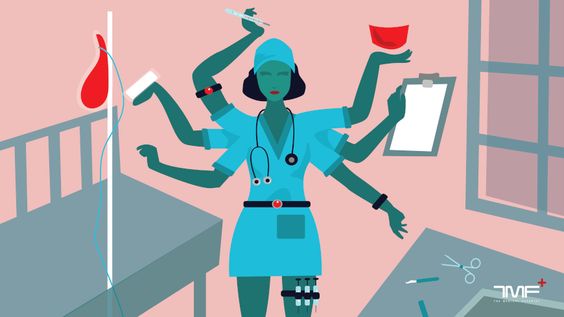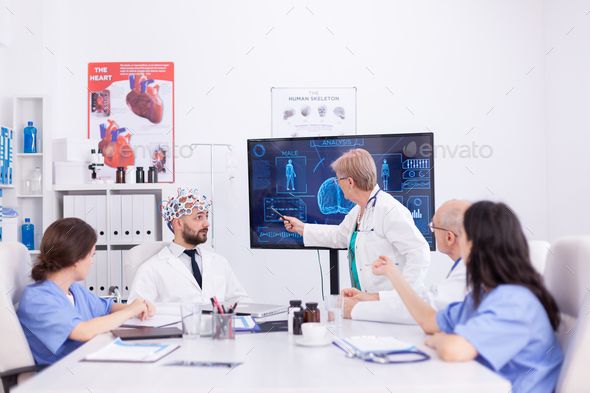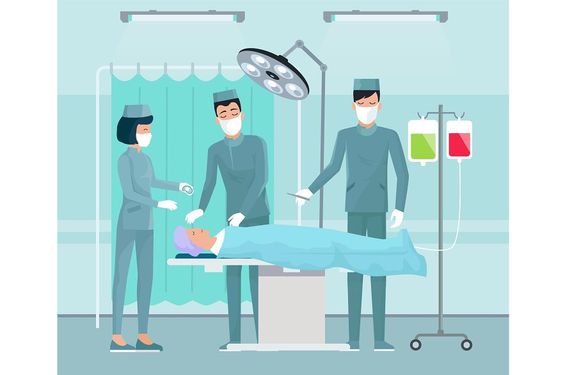
The Impact of Technology on Nursing
Table of Contents
Imagine a nurse rushing from room to room, managing medication schedules, documenting patient observations, and coordinating care plans all while juggling a multitude of other tasks. However, the scene has gradually shifted. Today, a nurse might instantly utilize a tablet to access a patient’s medical history, communicate with colleagues seamlessly through secure messaging apps, and even monitor vital signs remotely using wearable sensors. Technology has become an inseparable part of modern nursing practice, fundamentally transforming how nurses deliver care.
Nurses are the backbone of the healthcare system, providing comprehensive care to patients across various settings. They perform various duties, including administering medications, assessing patient needs, educating patients and families, and advocating for their well-being. Traditionally, nurses relied heavily on paper charts, manual data entry, and face-to-face communication. However, the rapid advancement of technology has significantly impacted all aspects of their work.
This essay will explore the multifaceted impact of technology on nursing. We will explore how technology has enhanced patient care by improving accuracy, efficiency, and accessibility. We will also examine the challenges associated with technology, such as data security concerns, the potential for job displacement, and the ever-present need for ethical considerations. Finally, the essay will discuss the emerging trends in healthcare technology and the future direction of the nursing profession in this ever-evolving landscape.
- Positive Impacts of Technology on nursing
The rapid integration of technology into the healthcare system has profoundly impacted how nurses deliver care. This impact is particularly evident in enhanced patient care, where technology offers many benefits for both patients and nurses. This section will explore four key areas where technology has positively impacted patient care: Electronic Health Records (EHRs), telehealth and remote monitoring, robotics and assistive technologies, and decision support systems and clinical algorithms.
A. Electronic Health Records (EHRs):
Traditionally, patient medical records were paper-based, making it cumbersome and time-consuming for nurses to access and share information. However, Electronic Health Records (EHRs) have revolutionized this process, offering several advantages:
- Improved Data Accuracy and Completeness: EHRs provide a centralized digital platform for storing and accessing patient data. This eliminates the risk of errors associated with illegible handwriting or incomplete paper charts. Nurses can access a comprehensive view of a patient’s medical history, including past diagnoses, medications, allergies, laboratory results, and imaging studies, allowing them to make informed decisions based on all relevant information.
- Enhanced Accessibility: EHRs allow real-time access to patient data from any authorized device within the healthcare network. This improves collaboration and communication among nurses, physicians, and other healthcare professionals, enabling them to provide more coordinated and efficient care. Additionally, EHRs can empower patients by allowing them to access parts of their medical records, fostering better communication and engagement in their healthcare journey.
- Reduced Medication Errors and Improved Patient Safety: EHRs can be integrated with computerized physician order entry (CPOE) systems, which reduce the risk of medication errors by automating the prescribing, dispensing, and administration process. Additionally, medication allergies and drug interactions can be flagged within the EHR system, further contributing to patient safety.
B. Telehealth and Remote Monitoring:
Telehealth technology has emerged as a game-changer in healthcare delivery, allowing nurses to connect with patients virtually using communication technologies like video conferencing and secure messaging platforms. This offers several benefits:
- Increased Access to Care: Telehealth overcomes geographical barriers, enabling nurses to care for patients in remote areas or with limited mobility. This is particularly beneficial for patients with chronic conditions who require frequent monitoring but may struggle to travel to healthcare facilities.
- Improved Chronic Disease Management: Telehealth platforms can be used for regular consultations, medication management, and patient education sessions. This allows for closer monitoring of chronic conditions like diabetes, heart disease, and respiratory illnesses, enabling timely interventions and potential prevention of complications.
- Enhanced Preventive Care: Telehealth can be utilized for virtual preventive care visits, including screenings, lifestyle counseling, and vaccination reminders. This encourages proactive health management and facilitates early detection of potential health concerns.
C. Robotics and Assistive Technologies:
Robotics and assistive technologies play an increasingly vital role in supporting nurses in delivering care and improving patient outcomes:
- Reduced Physical Strain: Lifting and transferring patients can be physically demanding and pose a risk of injury to nurses. Exoskeletons and robotic lifting devices can assist nurses with these tasks, reducing physical strain and preventing potential musculoskeletal injuries.
- Improved Precision and Minimized Human Error: Robotic surgery is becoming increasingly common, with robots assisting surgeons in minimally invasive procedures. This technology offers several advantages, including improved visualization, enhanced dexterity, and reduced risk of human error, leading to potentially faster recovery times and better patient outcomes.
- Enhanced Patient Monitoring and Care: Wearable devices and sensors can be used to monitor patients’ vital signs and other physiological parameters continuously. This allows nurses to detect even subtle changes in a patient’s health condition and intervene promptly, potentially preventing complications and improving the quality of care.
D. Decision Support Systems and Clinical Algorithms:
Clinical decision support systems (CDSS) and clinical algorithms are computer-based tools designed to support nurses in making clinical decisions. These systems utilize evidence-based guidelines and patient data to provide recommendations, prompting nurses to consider relevant details and potential risks associated with specific treatment options or interventions.
- Evidence-Based Decision Making: CDSS helps integrate the latest evidence-based practices into patient care, encouraging nurses to consider the best available options for treatment based on current medical knowledge and data.
- Improved Clinical Outcomes: By providing evidence-based recommendations, CDSS can improve clinical outcomes, reducing hospital readmission rates, better medication adherence, and improved overall patient well-being.
- Reduced Healthcare Costs: Utilizing evidence-based practices through CDSS can lead to more efficient resource allocation and treatment plans, potentially reducing healthcare costs.
In conclusion, technology has significantly impacted patient care, and the four areas discussed above highlight its potential to improve accuracy, efficiency, accessibility, and overall patient outcomes. While challenges exist related to data security, ethical considerations, and equitable access, continuous advancements in technology offer exciting
- Challenges and Concerns of The Impact of Technology in Nursing

While technology offers numerous benefits in nursing, its integration also presents challenges and concerns that necessitate careful consideration. This section will delve into four key areas where technology poses potential difficulties:
A. Data Security and Privacy:
The increasing reliance on Electronic Health Records (EHRs) and other digital platforms raises concerns about data security and patient privacy:
- Risks of Data Breaches and Misuse: Cyberattacks and data breaches pose a significant risk, potentially exposing sensitive patient information such as diagnoses, medications, and medical history. This can lead to identity theft, discrimination, and emotional distress for patients.
- Need for Robust Security Measures and Ethical Considerations: Healthcare institutions require robust cybersecurity measures, including firewalls, data encryption, and regular security audits. Additionally, ethical considerations regarding data ownership, access, and usage must be addressed to ensure responsible data handling practices.
B. Algorithmic Bias and Ethical Dilemmas:
The growing role of Artificial Intelligence (AI) in healthcare presents ethical dilemmas:
- Potential for Biased Decision-Making: AI algorithms are trained on existing data, which may contain inherent biases or reflect historical inequalities in healthcare access. This can lead to biased decision-making in patient diagnosis, treatment recommendations, and resource allocation.
- Importance of Human Oversight and Ethical Considerations: Human oversight remains crucial to ensure AI algorithms are used ethically and responsibly. Nurses must critically evaluate AI recommendations, address potential biases, and prioritize patients’ best interests.
C. Job Displacement and Skill Gaps:
The automation of specific tasks through technology raises concerns about nurses’ roles and potential job displacement:
- Concerns about Automation Replacing Jobs: Automation might replace some routine tasks nurses perform, such as medication dispensing or data entry. While this can free up nurses for more complex activities, it raises concerns about job security and potential unemployment.
- Need for Continuous Skill Development and Adaptation: Nurses require continuous skill development to remain relevant in the evolving technological landscape. Upskilling in data analysis, technology integration, and critical thinking will be crucial for adapting to changing job demands and staying valuable in the healthcare workforce.
D. Digital Divide and Accessibility:
Unequal access to technology and digital literacy can exacerbate existing disparities in healthcare:
- Unequal Access to Technology: Not all patients or nurses have equal access to technology or the Internet. This can create a digital divide, limiting access to telehealth services, online educational resources, and other technology-driven healthcare solutions.
- Importance of Addressing Technological Barriers: Addressing the digital divide is crucial to ensure equitable access to healthcare services for all. This might involve providing technological resources, training programs, and alternative service options for individuals lacking access to technology.
In conclusion, while technology undeniably offers significant advantages in nursing, it also presents challenges that require thoughtful solutions. Addressing data security concerns, mitigating algorithmic biases, promoting continuous skill development, and bridging the digital divide are all imperative to ensure responsible and ethical technology integration in the nursing profession. By acknowledging and addressing these challenges, technology can be harnessed as a powerful tool to enhance patient care, improve healthcare quality, and empower nurses in their vital roles within the healthcare system.
- The Future of Technology in Nursing
The rapid development of technology continues to reshape the healthcare landscape, offering exciting possibilities for nursing.
A. Emerging trends hold immense potential for further advancements:
- Wearable devices: These devices can continuously monitor vital signs, activity levels, and other health parameters, providing real-time data for personalized care and timely interventions.
- Artificial intelligence (AI): AI algorithms can assist nurses in tasks like analyzing large datasets to identify potential risks or patterns, streamlining data analysis, and providing personalized care recommendations.
- Big data: By analyzing vast amounts of healthcare data, valuable insights can be gained, influencing evidence-based practice development, resource allocation strategies, and personalized medicine approaches.
- Personalized medicine: This emerging field aims to tailor treatment plans based on individual characteristics, and technology can play a crucial role in analyzing genetic data and developing customized treatment approaches.
B. Nurses have the opportunity to be at the forefront of these advancements by:
- Embracing continuous learning: Acquiring new skills and knowledge about emerging technologies will be crucial for nurses to utilize their potential fully in this evolving environment.
- Contributing to technology development: Nurses’ clinical expertise and insights are essential in designing and refining healthcare technologies to ensure they address real-world needs and are user-friendly in clinical settings.
- Advocating for ethical considerations: As technology advances, careful consideration must be given to ethical concerns surrounding data privacy, patient autonomy, and potential biases in AI algorithms. Nurses can play a vital role in advocating for responsible development and use of technology in healthcare.
C. It remains paramount to ensure that all technological advancements are human-centered, prioritizing patients’ needs, privacy, and well-being. By embracing opportunities for learning and shaping the future of technology with ethical considerations at the forefront, nurses can continue to play a vital role in driving positive change in healthcare.

Conclusion
This essay explored the multifaceted impact of technology on nursing, highlighting its profound influence on various aspects of patient care, efficiency, and the overall nursing practice. We examined how technology has enhanced patient care through Electronic Health Records (EHRs), telehealth and remote monitoring, robotics and assistive technologies, and decision support systems.
However, it is crucial to acknowledge that technology presents opportunities and challenges. While it promises increased efficiency, improved data access, and enhanced patient care, concerns regarding data security, the potential for job displacement, and the need for ethical considerations remain prevalent. Therefore, a balanced approach is essential, focusing on maximizing the benefits while mitigating the risks associated with technological integration.
In this evolving landscape, nurses have a critical role to play. They can embrace continuous learning to acquire the skills needed to utilize new technologies effectively. They can contribute their clinical expertise to developing and implementing human-centered technologies that prioritize patient well-being and ethical considerations.
Moreover, nurses can advocate for responsible technology use and ensure that it supplements rather than replaces their crucial role in delivering compassionate, personalized care. By actively shaping the future of technology in healthcare, nurses can ensure it serves as a powerful tool for further enhancing patient care and advancing the nursing profession in the years to come.
In addition to reiterating the thesis and summarizing key points, this conclusion emphasizes the importance of balance in technology integration. It highlights the critical role of nurses in shaping the future. It concludes with a positive outlook, emphasizing the potential of technology to enhance patient care and advance the nursing profession when used responsibly and ethically.







